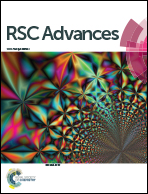Influence of natural water composition on reactivity of quicklime derived from Ca-rich and Mg-rich limestone: implications for sustainability of lime manufacturing through geochemical modeling
Abstract
We studied the effects of water quality on the hydration of quicklimes prepared from calcitic limestone and dolomitic limestone during calcination at 1050 °C. At a low total chloride and sulfate content, reactivity is insensitive to concentration and no effect on quicklime slaking is seen. At higher concentrations, however, we observe a chromatographic effect for chlorides and sulfates. Concentrated chlorides react with the slaking water, forming products such as CaCl2 that are much more soluble than Ca(OH)2, which facilitates transformation of quicklime to slaked lime. In the range of sulfate concentrations in natural waters we observed no effect of sulfates during quicklime hydration. Consequently, in natural waters and their mixtures (conductivity < 2600 μS cm−1), only chloride concentrations are found to promote quicklime hydration. These results suggest that water treatment technologies, applied to natural light brackish water compositions, will not lead to quality improvement for lime-industry products.



 Please wait while we load your content...
Please wait while we load your content...